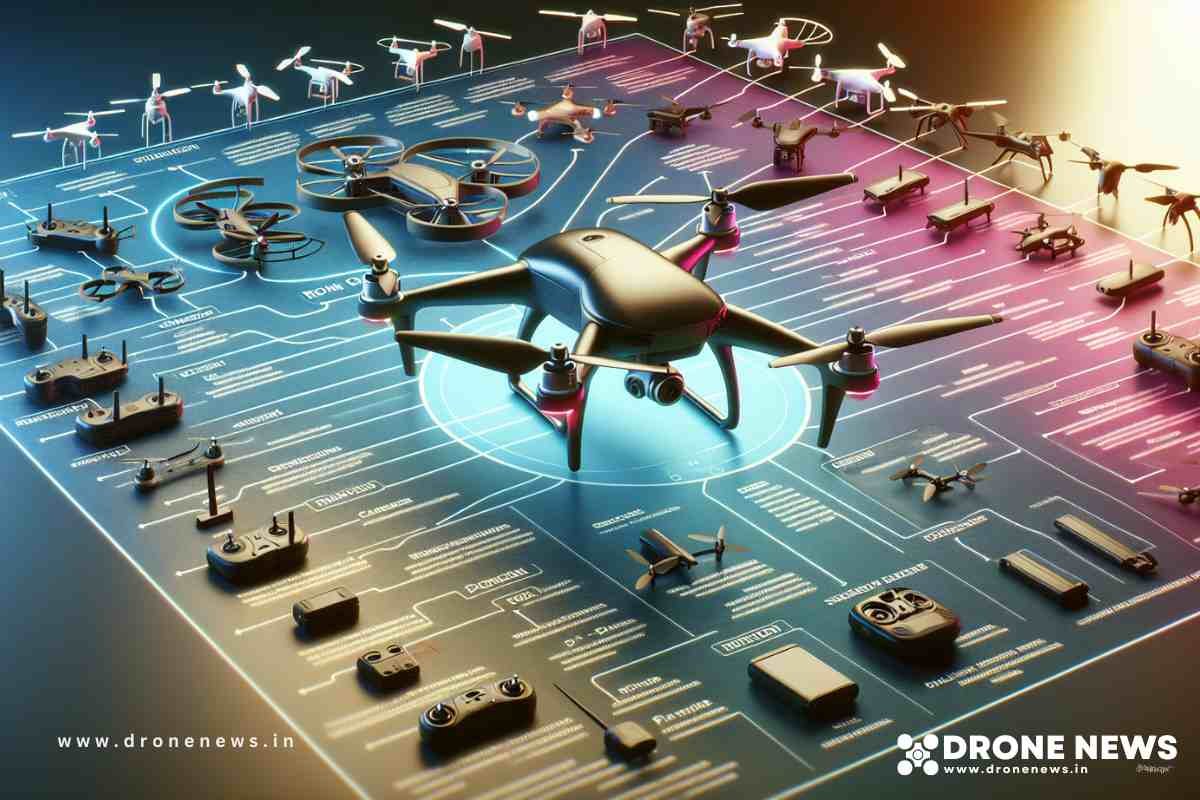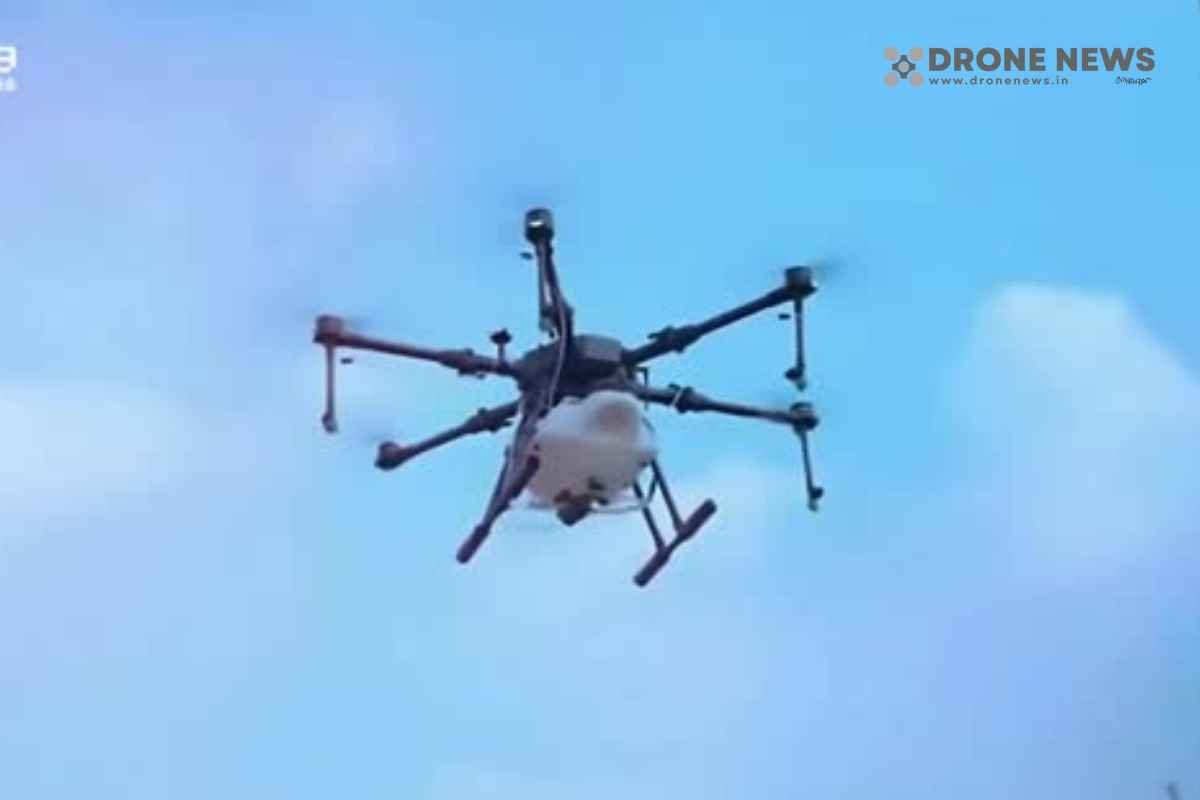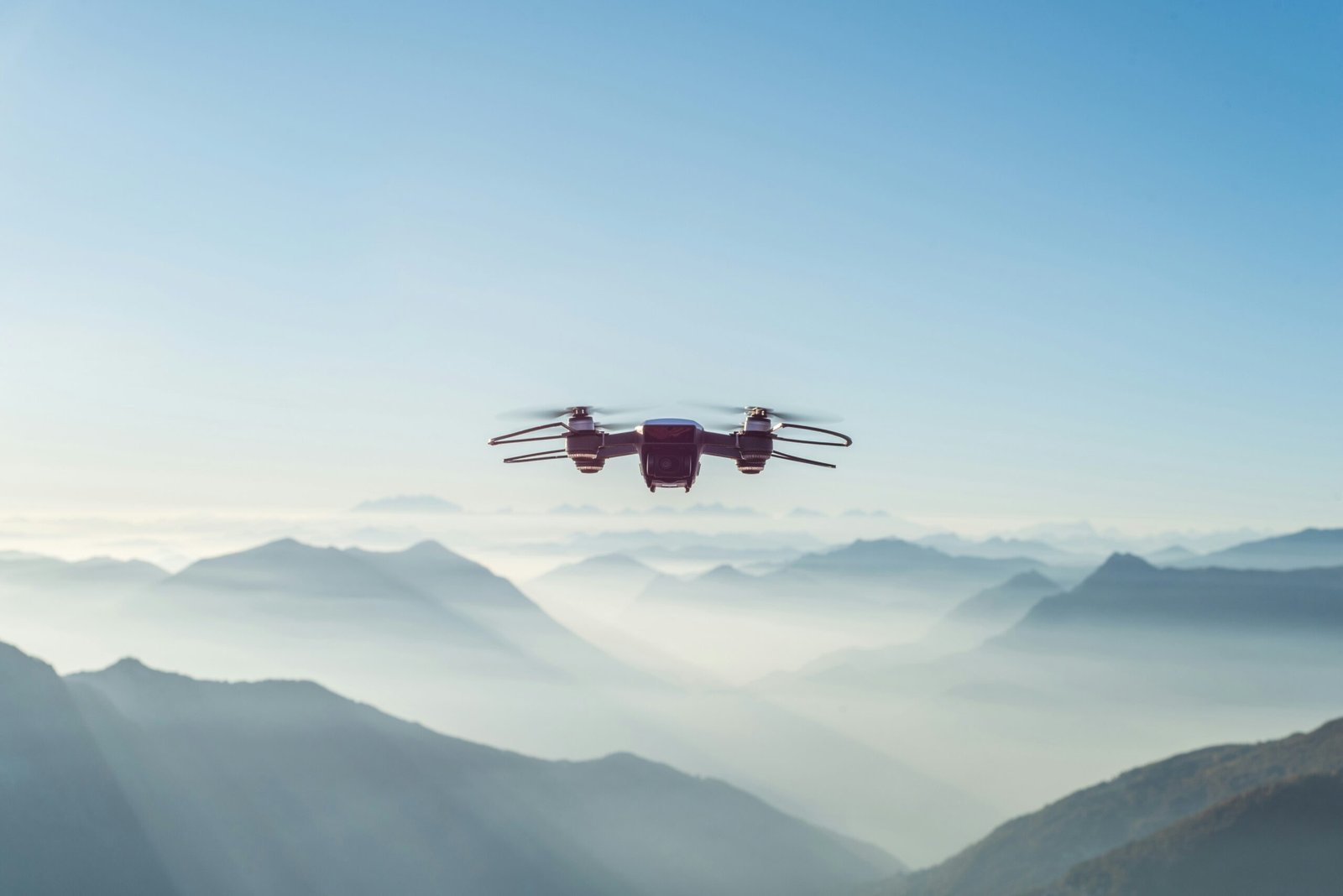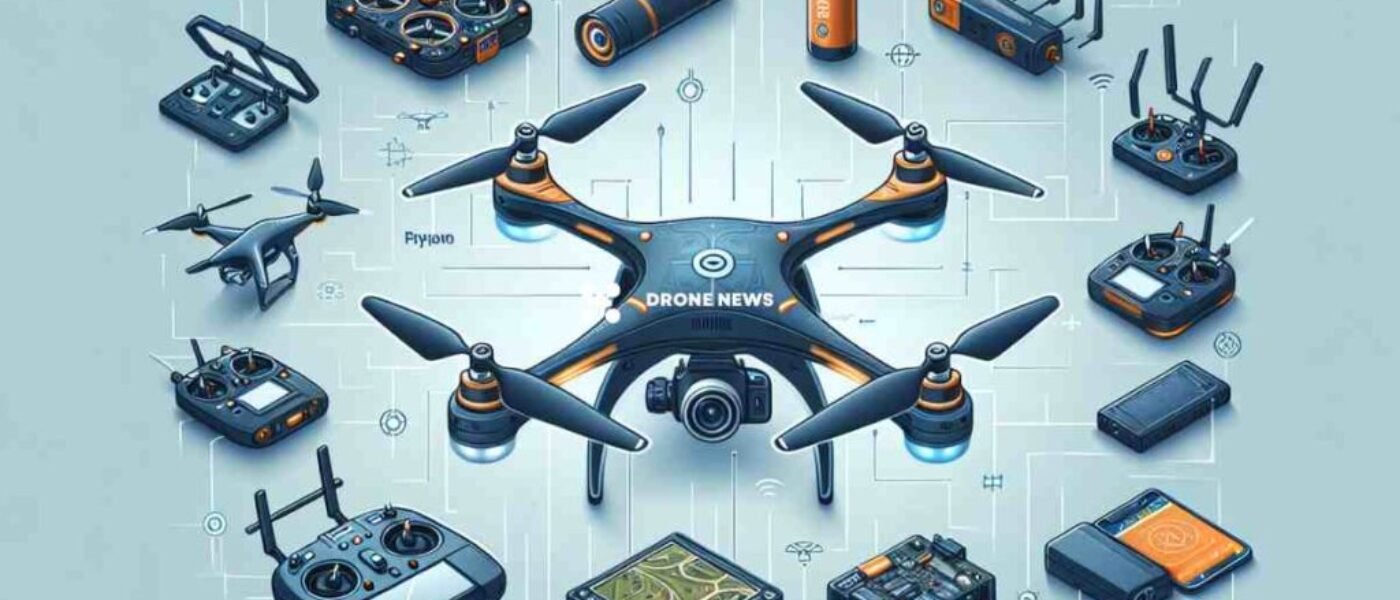Introduction
Welcome to your ultimate beginner’s guide to the fascinating world of drones! Whether you’re looking to capture breathtaking aerial photos or dive into drone surveying and business, understanding the basics is your first step. From the smallest hobby models to advanced commercial drones, we’ll cover it all. In this guide, we’ll unravel basic drone terminology, explore different types, and highlight essential features, making sure you’re all set to soar into the skies confidently. Let’s get started!
Basic Drone Terminology

Whether you’re an aspiring drone enthusiast or a seasoned pilot, getting to grips with the lingo is essential. Let’s dive into some basic terms you’ll encounter in the world of drones.
Common terms used in drone technology
– Drone/UAV: A drone, also known as an Unmanned Aerial Vehicle (UAV), is an aircraft without a human pilot on board. They can be operated remotely or fly autonomously through software-controlled flight plans.
– Remote Controller: This is the device pilots use to control the drone. It usually looks like a sophisticated video game controller and links to the drone via radio waves.
– Quadcopter: The most common type of drone, featuring four rotors. It’s popular for its balance and ability to hover steadily in the air.
– FPV (First Person View): A popular mode where pilots see what the drone sees through a camera feed, usually displayed on goggles or a screen.
– Gimbal: A pivoted support that allows the camera on a drone to remain level while in flight, providing smooth and steady imagery.
– Payload: Refers to the load a drone can carry, which can include cameras, sensors, or packages.
Understanding flight controllers and their role
The flight controller is essentially the brain of your drone. It’s what enables it to fly stably, respond to control inputs, and execute autonomous flight modes. Here’s a bit more detail on its role:
– Stabilisation: Flight controllers process data from sensors like gyroscopes and accelerometers to keep the drone level and stable during flight.
– Navigation: They interpret GPS data, allowing the drone to hold position, return to home, or follow predetermined waypoints.
– User Interface: Some advanced flight controllers come with user interfaces that can be customised for specific flight applications, offering options for tweaking responsiveness or applying flight limits.
Understanding the flight controller’s basics can provide insight into how your drone operates and how to troubleshoot potential flight issues.
Types of Drones
Not all drones are created equal. Depending on what you want to achieve, there are different types catering to various needs. Let’s unpack what’s available in the drone skies.
Consumer drones vs. commercial drones
Consumer Drones:
– Purpose: Mainly for recreational use. They are ideal for beginners and hobbyists who want to capture aerial photos or videos.
– Features: Consumer drones often come packed with user-friendly features like auto takeoff, landing, and simple controls.
– Pricing: Generally more affordable than commercial counterparts.
Commercial Drones:
– Purpose: Used by businesses for tasks like inspection, surveying, photogrammetry, and more.
– Features: Commercial drones are equipped with advanced sensors, enhanced payload capacities, and sometimes custom software solutions tailored for specific industry applications.
– Pricing: These drones tend to be pricier due to their more complex and durable build.
The choice between consumer and commercial drones will largely depend on the complexity of your tasks and budget.
Specialised drones for videography and photography
Drones have revolutionised photography and videography, opening new creative avenues. Here’s what makes them indispensable in capturing stunning visuals:
– Camera Quality: Drones in this category often come with high-definition cameras capable of capturing 4K or even more significant resolution footage.
– Stabilisers (Gimbals): Essential for capturing smooth, cinematic shots without any shakiness.
– Flight Modes: Many photography drones offer flight modes like “orbit”, “follow me”, and “waypoints” to help in creative shots and angles automatically.
These drones are primarily for professional photographers or filmmakers who need high-end imaging solutions.
Agriculture and delivery drones
Drones are not just for consumer and media purposes; they have become valuable tools in farming and logistics too.
Agricultural Drones:
– Purpose: Used for monitoring crop health, spraying pesticides, and efficient land management.
– Features: Typically equipped with specialised sensors and cameras for mapping, crop analysis, and field surveying.
– Benefits: They help farmers with precise data and insights, leading to better crop management and yield forecasting.
Delivery Drones:
– Purpose: Designed to transport goods over short distances, they are increasingly being explored by logistics companies.
– Features: These drones are usually equipped with mechanisms to keep parcels secure during flight and sophisticated navigation systems to plan efficient delivery routes.
– Future of Delivery: While still in the nascent stage, delivery drones promise faster shipping times and are an exciting frontier in logistics innovation.
From aerial imaging to practical goods delivery, drones are becoming integral in multiple industries, paving the way for the future.
Understanding these drone types will help you choose the right one based on your specific needs, whether for fun, business, or pioneering industry applications. As technology advances, we can only expect drones to become smarter, more efficient, and even more embedded in our daily lives. Exciting times ahead for drone enthusiasts!
Essential Features of Drones

When it comes to drones, there are a plethora of exciting features that set them apart and make them useful tools for both hobbyists and professionals alike. Let’s delve into some of the essential features that every drone enthusiast should know about.
Camera Capabilities and Sound Effects
One of the most enticing features of modern drones is their camera capabilities. Many drones are equipped with high-definition cameras that can capture stunning aerial photographs and videos, making them a favourite toy for photographers and videographers. Whether it’s capturing sweeping landscape shots or getting that perfect angle for a commercial shoot, drones with advanced camera systems can elevate your photography game.
Additionally, some drones incorporate sound effects into their recordings, which can add a cinematic flair to videos. Although typically, drones operate with a quiet hum, some models allow you to record sound separately, ensuring your videos are not only visually impressive but audibly engaging as well. So when you’re flying your drone, keep in mind how you can enhance your footage with both visual and sound effects.
Battery Life and Charging Options
Battery life is another crucial consideration when choosing a drone. Depending on the model, drones can have varying flight times, ranging from a mere 10 minutes to over 30 minutes on a single charge. Therefore, understanding your battery requirements based on your flying goals is essential.
There are several charging options available to cater to different needs. Some models come with swappable batteries, allowing you to extend your flight time by quickly swapping out a drained battery for a fully charged one. Additionally, fast charging technology has made its way into the drone scene, enabling users to get back in the air in no time. When planning a day of drone flying, it’s always wise to carry extra batteries or a portable charging unit to ensure you’re never grounded.
Navigation Systems and UAV Technologies
Drones are equipped with sophisticated navigation systems that help pilots guide them with precision. Many drones utilise GPS technology to maintain stable flight paths and hover over specific locations. For beginners and professionals alike, these systems are invaluable for making flying more intuitive and ensuring safety during operations.
In addition to GPS, advanced UAV (Unmanned Aerial Vehicle) technologies like obstacle detection and avoidance are now commonplace. These features use sensors to identify and manoeuvre around potential hazards, reducing the risk of crashes and ensuring more secure flights. As drone technology continues to evolve, these navigation systems become smarter, making piloting a breeze for everyone, from hobbyists to seasoned pros.
Benefits of Using Drones
Drones have revolutionised how we perceive and interact with the world around us. From enhancing creative pursuits to transforming industries, let’s explore the myriad benefits these flying marvels bring to the table.
Enhancing Videography and Cinematography
For filmmakers and video enthusiasts, drones present an exciting new toolkit. Drones can capture shots that were once impossible or too expensive to film, such as sweeping flyovers, dramatic skyline views, and dynamic chase sequences. Thanks to their agility and ability to access tight spaces, drones add an unprecedented level of creativity to videography and cinematography.
Moreover, drones provide a safe and cost-effective way to record high-quality footage from up above, reducing the need for expensive equipment like cranes or helicopters. With an array of drones designed specifically for filmmaking, creators can choose gear that best fits their storytelling needs and budget, making professional-quality productions more accessible.
Application in Various Industries Like Farming and Surveying
Beyond creative fields, drones have found critical applications in numerous industries, fundamentally altering how we carry out tasks and conduct business. In agriculture, drones are being used for monitoring crops and livestock. They provide farmers with detailed data about fields, enabling precision farming techniques that can lead to higher yields and more sustainable practices. By delivering a bird’s-eye view, drones help farmers identify issues like pest infestation or water shortages quickly and efficiently.
In the realm of surveying, drones have become essential tools for mapping and collecting data. Their ability to cover large areas quickly makes them ideal for land surveys and environmental assessments. Moreover, with drone photogrammetry, surveyors can create highly accurate and detailed 3D maps of terrains, which are invaluable for planning and construction projects.
Overcoming Challenges in Drone Technology
While the benefits of drones are numerous, it’s important to note that the industry still faces some challenges. Regulatory hurdles are one of the main barriers, as governments around the world are continuously working to create policies that ensure safe and responsible drone operations. As a drone pilot, obtaining an appropriate remote pilot certificate is crucial to navigating these regulations and adhering to local laws.
Additionally, technical limitations, such as limited battery life and range, still pose challenges for drone users. However, with ongoing advancements in drone technology — such as improved battery efficiency, extended flight ranges, and enhanced artificial intelligence — these obstacles are continuously being addressed. Furthermore, community engagement and knowledge-sharing platforms allow drone enthusiasts and professionals to share insights, troubleshoot issues, and exchange innovative ideas, driving the industry forward.
In conclusion, whether you’re exploring the skies for fun or harnessing the power of drones for your business, understanding these essential features and benefits is key to maximising your experience. Drones offer an exciting blend of technology and opportunity, and the future certainly looks bright from up here!
Pathways into the UAV Industry

As the popularity of drones continues to soar, so too do the opportunities in this exciting industry. Whether you’re dreaming of designing cutting-edge flying machines, managing a fleet for aerial photography, or using them in agriculture, there’s a path for everyone. Let’s explore some of the avenues you can take to launch your UAV (Unmanned Aerial Vehicle) career.
Relevant Degrees and Courses to Consider
Getting the right education is often a crucial first step. Here are a few options to consider:
– Aeronautical Engineering: Ideal for those interested in the design and manufacturing of drones.
– Geospatial Sciences: If your goal is drone surveying or photogrammetry, this is a fantastic choice.
– Computer Science: A valuable degree for anyone looking to develop drone apps or enhance drone technology.
– Photography or Film Studies: Great for aspiring commercial drone pilots aiming to capture the perfect shot.
– Business Management: Helpful for those wanting to delve into the drone business and its complexities.
Numerous colleges provide specialised courses focusing purely on UAV technology, and plenty of online platforms offer certifications that can boost your knowledge and resume.
Key Skills Needed for Drone Building and Operation
To really make it in the drone field, there are certain skills that you’ll want to master:
– Technical Skills: Understanding electronics and basic principles of flight is essential—knowledge of soldering and working with flight controllers can be beneficial.
– Coding Skills: Especially handy if you’re into developing applications or customising drone software.
– Attention to Detail: Critical for drone assembly, troubleshooting, and ensuring successful flights.
– Problem-Solving Skills: Drones can face various issues in operation, and being a pro at quick problem-solving will give you an edge.
– Communication Skills: Important for collaborating within teams and explaining complex concepts to clients or colleagues.
Keeping up-to-date with advancements in drone technology is also essential, as this field moves fast!
Career Opportunities and Potential Challenges
The UAV industry offers a wealth of opportunities, yet it also presents its own set of challenges:
Opportunities:
– Drone Pilot: A diverse role, flying drones for photography, surveying, inspections, and more.
– Drone Engineer: Involves innovating and improving drone structures and systems.
– Data Analyst: Specialises in interpreting data collected through drones for various applications such as farming.
– Compliance Officer: Ensures all drone operations comply with regulations and standards.
Challenges:
– Regulatory Hurdles: The drone industry is heavily regulated, varying by region. Securing necessary pilot certificates can be time-consuming.
– Technological Evolutions: Rapid advancements mean constant learning and adaptation are necessary.
– Market Competition: With the rise in drone popularity, standing out in a crowded market can be tough.
Despite these challenges, the UAV industry offers a thrilling career path that combines technology, creativity, and innovation. With the right preparation and a passion for drones, the sky’s the limit!
Conclusion
Drones have opened up a new world of possibilities, whether it’s for a budding hobbyist or a professional in the commercial sector. Understanding basic terminology and the various types and features of drones is vital in choosing the right drone for your needs. Remember:
– Decide what you’ll primarily use the drone for.
– Consider features such as flight time, camera quality, and ease of use.
– Stay informed about regulations and attain the necessary pilot certificates.
Embark on your drone journey with confidence, and who knows what heights you’ll achieve!
